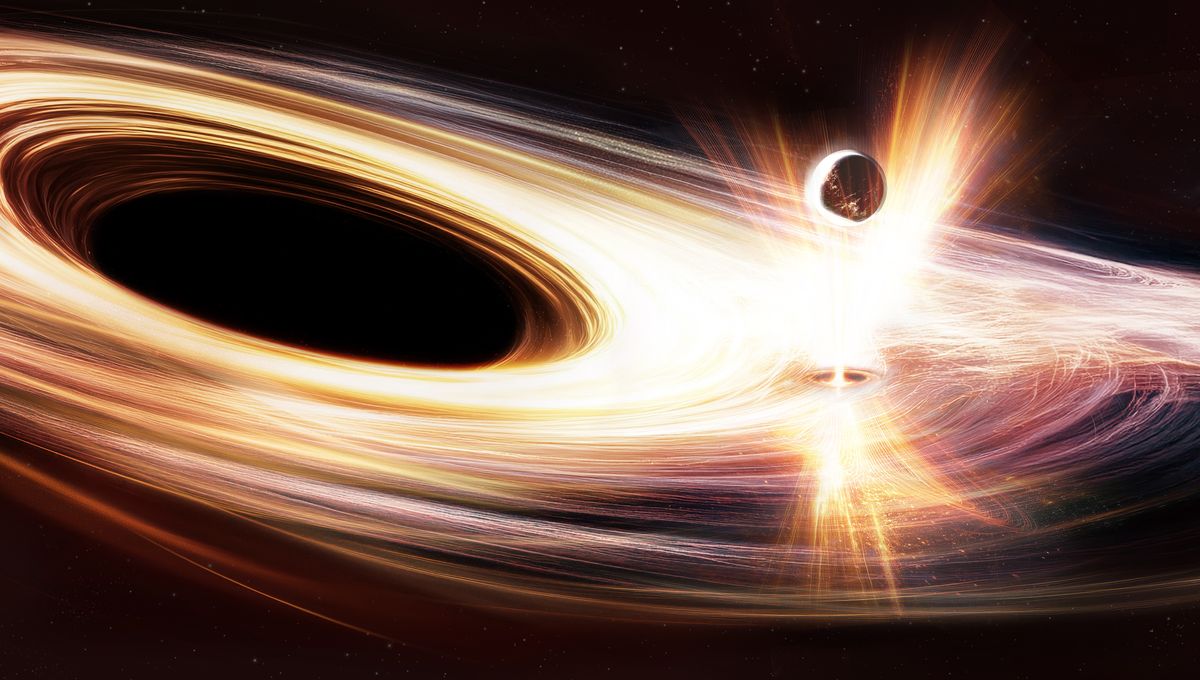
Last summer, researchers announced the first ever detection of a supermassive black hole being spotted as it awoke. The object, known as SDSS1335+0728 and nicknamed Ansky, is one of a kind. We have seen the effects of active black holes and the lack of activity of sleeping ones, but we had never witnessed the changes as one becomes active. Now Ansky is showing that there is a lot more that we do not know.
Ansky was first seen erupting in 2019, with bursts of X-ray light from February 2024. These repeated at almost regular intervals and are known as quasi-periodic eruptions. The source of these specific eruptions is a complete unknown.
“This rare event provides an opportunity for astronomers to observe a black hole’s behaviour in real time, using X-ray space telescopes XMM-Newton and NASA’s NICER, Chandra and Swift. This phenomenon is known as a quasiperiodic eruption, or QPE. QPEs are short-lived flaring events. And this is the first time we have observed such an event in a black hole that seems to be waking up,” lead author Lorena Hernández-García, a researcher at the Valparaiso University, said in a statement.
“The first QPE episode was discovered in 2019, and since then we’ve only detected a handful more. We don’t yet understand what causes them. Studying Ansky will help us to better understand black holes and how they evolve.”
Supermassive black holes can have a burst of activity when they rip apart a star, or can be steadily bright as they slowly feed on material accumulated in an accretion disk. Ansky appears to be doing neither. The idea is that there is surrounding material, possibly in an accretion disk, but it is being disturbed by something, such as a star. Even under that scenario, this system is odd.
“The bursts of X-rays from Ansky are ten times longer and ten times more luminous than what we see from a typical QPE,” added Joheen Chakraborty, a team member and PhD student at the Massachusetts Institute of Technology.
“Each of these eruptions is releasing a hundred times more energy than we have seen elsewhere. Ansky’s eruptions also show the longest cadence ever observed, of about 4.5 days. This pushes our models to their limits and challenges our existing ideas about how these X-ray flashes are being generated.”
The fact that these events are pushing at the limits of our models says more about our models than about the observations. It is our only observation of the turning on of a supermassive black hole, and odd QPEs in other scenarios might be the norm here.
“For QPEs, we’re still at the point where we have more models than data, and we need more observations to understand what’s happening,” says ESA Research Fellow and X-ray astronomer, Erwan Quintin.
“We thought that QPEs were the result of small celestial objects being captured by much larger ones and spiralling down towards them. Ansky’s eruptions seem to be telling us a different story. These repetitive bursts are also likely associated with gravitational waves that ESA’s future mission LISA might be able to catch. It’s crucial to have these X-ray observations that will complement the gravitational wave data and help us solve the puzzling behaviour of massive black holes.”
The study is published in the journal Nature Astronomy.
Source Link: We Caught A Black Hole Waking Up – And There's Something Odd About Its Flares